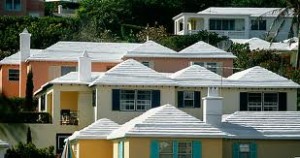Archive for the ‘Roofing Laws and Regulations’ Category
Roofing Company Fined for Unsafe Conditions
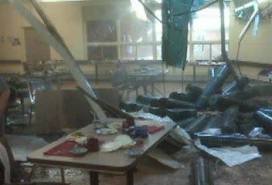
In Calgary Canada Canterbury Roofing Ltd. received a fine of $15,000 after being convicted of creating an unsafe condition under the Safety Codes Act of Alberta.
While working at the long term care facility Clifton Manor on April 13, 2011, the roofing company placed heavy pallets on the roof causing it to cave in. No one was injured when the pallet of roofing materials weighing approximately 1,224 crashed through the dining area.
Residents Where under the Roof Moments before It Collapsed
At the time of the collapse, Clifton Manner staff was serving lunch to 15 elderly residents in the dining room. When the staff heard the cracking noise above their heads they were able to move the residents, most of who are in wheel chairs, out of the way.
Judge Brian Mason convicted and gave Canterbury Roofing Ltd. the maximum fine the law allowed on Thursday October 25th.
Chief building official Kevin Griffiths said “no one was injured in the incident but there was the potential for injury or worse.” He went on to say “this was a very serious matter; the city’s investigation revealed the company did not adequately ensure the roof would be able to hold the building materials. We did not see the due diligence done by this contractor”.
The city of Calgary has lobbied the provinces Municipal Affairs ministry to significantly increase the fines and is waiting for approval to raise the maximum fine for first time offenders from $15,000 to $150,000 and raise the maximum penalty for second time offenders from $30,000 to $500,000.
Insurance Company to Limit Roof Payouts

Tennessee Farmers Mutual Insurance Company, Tennessee’s second largest home insurer said it will no longer pay 100% of the cost for roofing materials and replacement shingles. The company will instead be paying the actual cost value, or replacement cost less the depreciation.
Tennessee Farmers Mutual Ins. Co., better known as Farm Bureau spokesman Dan Batey said “We had to make this change because we can’t continue to be unprofitable and lose money.” Since 2008 the insurer has paid out more in claims than collected in premiums.
One Year Cap To Report Hail Damage
A filing was approved by the Tennessee Department of Commerce and Insurance for the actual cash value settlement for roofs. Additionally a requirement has been added that all hail losses must be reported within one year from the date of the hail loss.
The Farm Bureau already had limited coverage for some older roofs, but now the change will affect all policyholders. The changes will apply to policies written or renewed on Oct. 1, 2012 and thereafter. Other insurance companies in Tennessee have already applied roofing limits to their policies.
Batey said in the early 1990’s insurers began offering full roof replacements as a way to gain market share. Before then, it was standard industry practice to offer limited roof coverage.
Government Cool Roof Initiative Reaching Goals

In 2010 Secretary of Energy Steven Chu issued a memorandum directing that all Department of Energy sites install cool roofs when it is cost effective, basically when a roof needed to be replaced or repaired. According to Jennifer MacDonald, director of DOE’s Sustainability Performance Office, the cost is comparable when installing a cool roof versus replacing a standard roof.
So far the Department of Energy has installed approximately 160 cool roofs on government buildings. Chief among the reasons agencies are installing cool roofs is the energy savings.
National Archives in College Park Md. And William J. Clinton Presidential Library in Little Rock Ark.
Two buildings for the National Archives have installed combination of green and white roofs with the addition of solar panels on the sunniest locations. Another benefit is reducing the storm water drain off since the rainwater waters the green roof and prevents excess water entering into the Chesapeake Bay.
Mark Sprouse the director of the National Archives Facilities and property management division said “by the time we removed the old roof and put the new roof on and put the solar panels in and tied them into the building electrical system, it took about six months. “ He went on to say “It saves energy by two ways, it reduces the heat load underneath the roof so we don’t have to cool as much. It reflects the sun and the solar panels are producing about 30 kilowatts of power on a bright day, which we feed back into our building electrical system. “
The green and white roofs are part of the Executive Order 13514 that President Obama singed in October 2009 to established goals for agencies to reduce greenhouse gas emissions and increase energy efficiency.
Texas DA Investigating State Farm Roof Claims
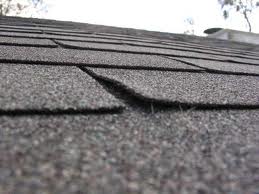
In Austin Texas investigators are trying to determine why State Farm Insurance turned down thousands of claims involving Hurricane Ike. Hundreds of lawsuits and a class action suit involving approximately 110,000 claimants were filed in Houston and Galveston over the handling of the 2008 storm regarding “lifted shingle” damage.
The lifted shingle damage is when high winds break the watertight seal on roof shingles and partially pulls them away from the roof. Houston Attorney Steve Mostyn said State Farm and a subsidiary State Farm Lloyds, intentionally denied the lifted shingle claims and took deliberate steps to initially deny roof-damage claims.
Paid Over $1.5 Billion to Claimants
State Farm Lloyds said that they are continuing to work to resolve their policy holders’ claims, including those in litigation. “We are proud of our response to Hurricane Ike. To date we have paid our policyholders more than $1.5 billion, much of which went to repair or replace roofs.” They went on to say they strongly dispute the lawsuit accusations and have cooperated fully with the Travis County District Attorney.
State Farm Lloyds also submitted a rate filing notice to Texas Department of Insurance that customers across the state will see homeowners insurance premiums go up an average of 20% due to increase number of claims siting roofing prices have gone up almost 90% in the last five years.
OSHA Issues Fines After Man Dies from Roof Fall
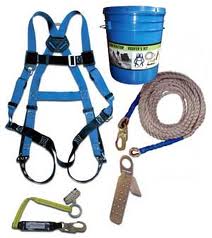
JC Silva Remodeling Services in Bridgeport Connecticut has received more than $70,000 in fines for violating fall-protection standards at 2 work sites. Three separate OSHA inspections revealed that workers did not have adequate fall safety equipment and lacked fall hazard training.
While installing a skylight on a 2 story condo, one of Silva’s employees fell to his death, prompting the initial inspections by the Occupational Safety and Health Administration. 46 year old Francisco Amarel fell 39 feet while on the roof of Sunwood Condominiums in February.
Police Called OSHA To Scene of Death
OSHA inspectors visited JC Silva’s other two sites after receiving complaints to the Bridgeport office.
The Department of Labor issued a stop-work order at the jobsite at Sunwood Condominiums when they found the workers did not have workers compensation insurance and the company misclassified workers as independent contractors.
Another jobsite in Norwalk revealed the workers were performing roof repairs and on a ladder jack scaffold with no fall protection. JC Silva Remodeling was cited with “willful violations” since they had already been cited for similar hazards. Other violations included employees using pneumatic nail guns with no eye protection.
JC Silva Remodeling has resumed work on the 168 unit Sunwood Condominium complex. The complex is receiving major renovations including new roofs. Since being issued the citations on Friday, the owners of JC Silva have 15 days to schedule an informal conference with OSHA.
Man Ordered To Remove His Roof

An Aspen judge ordered Glenn Bear of Thomasville to tear down his illegally built roof or the county has the authority to come out and remove it. Judge Nichols of Pitkin County District Court ruled that he must remove the tin roof by November 1st or winters first snow fall, whichever comes first.
Bear put the new roof up last summer on a mobile home that he rents out on his property. In court Bear said “I went by Colorado state law, they refused me a permit, your honor. That roof oughta hold.”
Proof that Roof can Withstand Snow Load
Assistant county attorney Chris Seldin, chief building official Brian Pawl and code enforcement officer Carrington Brown proved that the roof needed a permit and Bear did not obtain one. They said Bear should have shown that the load bearing paths were properly designed with approved drawings from an engineer.
In June 2011 Bear came into the community development department after he received a notice of violation. Voices were raised and disagreements due to Bear not having approved drawings for his roof, and that he did not apply for a building permit.
Bears argument is that his neighbors have similar roofs and said there are hundreds of mobile homes with added roofs in the valley. “I did everything I could to make that place safe, I thought I did everything the right way.”
Man Faces Jail Unless He Submits Roof Plans
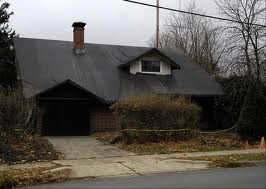
In St. Charles Illinois a man is faced with going to jail if he does not submit new roof plans. Clifford McIlvaine has been doing repairs on his home for the last 37 years with no end in sight.
Kane County Judge Thomas Mueller ruled that if McIlvaine doesn’t submit code-compliant roof plans by Wednesday, he will consider putting McIlvaine in Jail. He has already been found to be in contempt of court for failing to meet several construction deadlines imposed by the court.
McIlvaine was sued by the city in 2010 pushing him to finish the renovation project. A work schedule was agreed upon and McIlvaine hired his longtime friend and contractor Jim Webb to finish the job.
Vehicles in the Yard for Last 12 Years
The city and his neighbors are frustrated with the condition of the home. A box trailer has been in his yard for 11 years. Vehicles have been parked under a tarp outside the garage for the last 12 years.
City officials have requested a search warrant to check out the remodeling work. McIlvaine believes the city is ‘picking’ on him and they have no right to inspect his home or property.
McIlvaine has been living in the house his whole life and says he is an independent thinker and likes to build things that last.
Professor Pushes for White Roofs
Canadian Professor, Hashem Akbari is lobbying for roofing modifications to fight climate change. Hashem Akbari is a professor of civil and environmental engineering at Montreal’s Concordia University. He said that installing a white or cool roof that would not absorb as much heat as a standard roof is the key element to fighting global warming. “Cool roofs save you energy if your building is air-conditioned. If the building needs air-condition, installing a cool roof may actually solve your problem and you may not need it” he said.
Change to White Roof
When you are changing your roof, have your roof contractor use white or light color roofing materials he suggests. Light colored materials reflect the suns rays rather than absorbing them. Pavements and roofs account for more than 60% of urban surfaces trapping the suns heat and contributing to the heat island.
Replacing traditional roofs and roads with white or light color materials would yield a cooling benefit that over 50 years would be equivalent to reduction of 25 to `150 billion tons of carbon dioxide researchers said. When you improve the air quality within the city you cool the globe.
According to the EPA “The term “heat island” describes built up areas that are hotter than nearby rural areas. The annual mean air temperature of a city with 1 million people or more can be 1.8–5.4°F (1–3°C) warmer than its surroundings. In the evening, the difference can be as high as 22°F (12°C). Heat islands can affect communities by increasing summertime peak energy demand, air conditioning costs, air pollution and greenhouse gas emissions, heat-related illness and mortality, and water quality.”
OSHA Cites Wis. Firm for Violations of Workers on Rooftop

OSHA cited a Neenah, Wisconsin contracting firm for failing to provide fall protection devises for their workers and also failed to provide related training.
GTO Contractors could be fined up to $122,000 for the violations from 2 construction sites. OSHA investigators discovered roofers were exposed to fall hazards for roof repair in Janesville and Middleton. The investigators found workers on a steep roof and were not taking proper safety precautions.
GTO has been cited for similar violations 5 times by OSHA since 2007.
OSHA has been cracking down on violators since re-instating the stricter fall safety rules last year. The directive requires more training and safety precautions for workers who are working above ground by 6 feet. The new directive states that construction employees must comply with the Federal Regulation 1926.501(b)(13) and may no longer use alternate safety methods.
Federal Regulation 1926.501(b)(13) “Each employee engaged in residential construction activities 6 feet (1.8 m) or more above lower levels shall be protected by guardrail systems, safety net system, or personal fall arrest system unless another provision in paragraph (b) of this section provides for an alternative fall protection measure. Exception: When the employer can demonstrate that it is infeasible or creates a greater hazard to use these systems, the employer shall develop and implement a fall protection plan which meets the requirements of paragraph (k) of 1926.502.”
Wrestling Star Under $15,000 Roofing Lien
 WWE Star John Cena has finally resolved a tax lien against his home after he defaulted on payment to a roofing company. Owning over $15,000 for roof repair costs, Cena reportedly failed to pay the contractor for the work. The roofing company pursued legal action for payment and Cena’s house was put under a tax lien that threatened to take his home. He has since resolve the roof debt and the lien has been removed.
WWE Star John Cena has finally resolved a tax lien against his home after he defaulted on payment to a roofing company. Owning over $15,000 for roof repair costs, Cena reportedly failed to pay the contractor for the work. The roofing company pursued legal action for payment and Cena’s house was put under a tax lien that threatened to take his home. He has since resolve the roof debt and the lien has been removed.
Roofing Company Lien
This news has brought to mind many questions about the roofing process. Most homeowners have no idea of roof repair basics, let alone understand the legal consequences associated with failure to pay for contracted work. The truth is, a lien can be placed against any property in which payment for services has not be made according to the contractual obligation. The short of it: homeowners that do not pay their roof contractor for performed services can be subject to serious consequences.
Having a lien placed against the property essentially prohibits the sale of the home until a debt is paid. There are numerous examples of liens that can be taken out against a home, most often for non-payment of services or taxes on the home. Although a lien doesn’t necessarily impose an immediate threat for a homeowner, unresolved debts can bring serious legal action and even threaten foreclosure. Therefore, homeowners must ensure they follow the terms of any signed contract for services performed on their home in order to protect themselves from the possibility of a lien.



